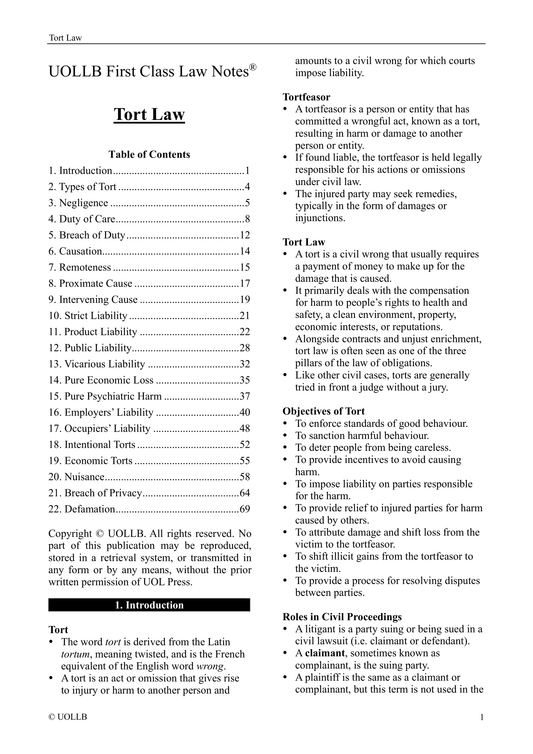Trespass to Person
Share
Trespass to the person is a legal concept that deals with intentional harm or interference with an individual's personal integrity and physical well-being. It encompasses two distinct but related torts: assault and battery. In England and Wales, it also includes false imprisonment.
Battery involves the intentional and harmful or offensive physical contact with another person without their consent. It refers to the actual act of touching or striking someone in a way that causes injury or offence. It is typically committed when a person intentionally and recklessly harms someone directly, as defined in Collins v Wilcock (1984). For instance, physically striking or forcefully shoving someone could constitute battery.
Assault refers to the intentional or recklessly act that causes another person to apprehend immediate and harmful or offensive physical contact. It involves creating a reasonable fear or anticipation of imminent harm, even if no physical contact ultimately occurs. It is typically committed when a person intentionally or recklessly harms someone indirectly, as defined in Collins v Wilcock (1984). For example, if someone threatens to hit another person and raises their fist in a way that makes the other person fear they will be struck, it could be considered assault. It should be noted that common assault is committed when a person either assaults another person or commits a battery, as defined in Collins v Wilcock (1984).
False imprisonment occurs when the defendant intentionally or recklessly and unlawfully restricts the claimant's freedom of movement completely. It is defined in Collins v Wilcock (1984) as unlawful imposition or constraint of another's freedom of movement from a particular place. It is worth noting that false imprisonment can occur even for a brief duration, such as a matter of seconds, as long as there is an unlawful restriction on the claimant's freedom of movement.
It can be seen from the above definitions that trespass to the person requires an intentional or reckless act. If the harm caused was accidental or unintentional, it may not meet the criteria for trespass to the person.




























































